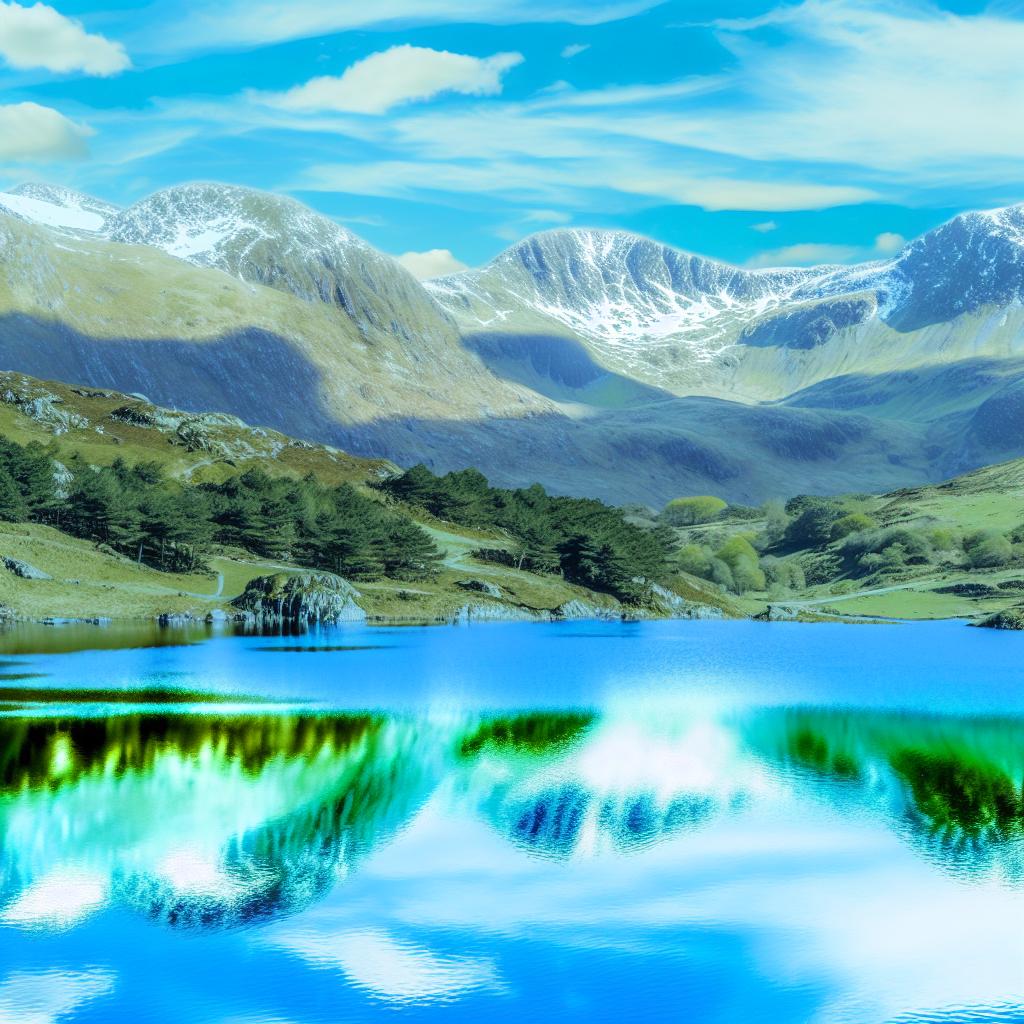Introduction to Glacial Lakes of Snowdonia
The glacial lakes of Snowdonia, situated in northwestern Wales within the boundaries of the Snowdonia National Park, serve as remarkable markers of the geological history shaped by the last Ice Age. Spanning an area renowned for its rugged mountains and deep, serene lakes, these natural wonders offer significant insights into the dynamic processes and historical developments that have sculpted the landscape we observe today.
Formation and Characteristics of Glacial Lakes
The formation of Snowdonia’s lakes is largely attributable to the last glacial period. During this epoch, vast glaciers advanced and retreated, carving out deep valleys and basins through relentless erosion and deposition of materials. As these glaciers gradually receded, meltwater accumulated in the carved-out depressions, giving rise to the lakes we see today. These lakes are distinguished by their pristine, often crystal-clear waters and steep, precipitous surrounds. This natural setting, juxtaposed with the mountainous backdrop, creates a visually striking tableau.
The characteristics of these lakes extend beyond their beauty. The geological actions of glaciers have endowed them with unique formations, some featuring moraines and drumlins at their bases. These formations further provide insight into the dynamic nature of glacial mechanics and enhance the richness of the region’s geological story.
Key Glacial Lakes in Snowdonia
Llyn Llydaw is arguably one of the most prominent glacial lakes in Snowdonia. It graces the eastern flank of Snowdon, Wales’s highest peak, and attracts numerous hikers and climbers with its breathtaking vistas. Not only is it a hub for outdoor enthusiasts, but it also serves as a reflective pool that mirrors the inimitable landscapes surrounding it.
In addition to Llyn Llydaw, Llyn Idwal demands attention. Nestled within the Ogwen Valley, it is encircled by striking rock formations that provide both a dramatic and serene environment. This lake holds ecological importance as it shelters various alpine plant and animal species, which are often found only in such specialized habitats.
Other notable lakes include Llyn Cwellyn and Llyn Padarn, each contributing to the regional allure with their distinct environments and geographic placements. While Llyn Cwellyn provides an idyllic environment for picnicking and leisurely walks, Llyn Padarn offers opportunities for various water activities and boasts a history tied to the slate industry that flourished in the nearby villages.
Ecological and Environmental Significance
Snowdonia’s glacial lakes are more than just picturesque landmarks; they are crucial components of the local ecosystem. They sustain a variety of aquatic life and play an integral role in supporting bird populations, including some endangered species. The flora surrounding these lakes includes rare alpine and sub-alpine species, which inhabit the rocky crevices and wetland margins, showcasing the diversity that thrives in these glacial refuges.
These lakes contribute significantly to the ecological diversity of the region, supporting intricate life webs and having implications for broader ecological processes such as carbon sequestration and nutrient cycling. The health and stability of these environments hinge on the careful balance maintained between human activities and natural processes.
To preserve the environmental integrity of the lakes, continuous monitoring is essential. Efforts focus on measuring water quality, tracking biodiversity, and maintaining conditions conducive to both existing wildlife and flora. Conservationists work diligently to implement sustainable practices that reduce human-induced pressures.
Visitor Information and Conservation
The glacial lakes of Snowdonia are not only havens for biodiversity but also attract an array of tourists and outdoor enthusiasts. Activities around these lakes, including hiking, photography, and bird watching, allow visitors to engage with the landscape intimately and sustainably. Each year, thousands come to immerse themselves in the natural beauty and tranquility offered by these glacial relics.
It is paramount for visitors to observe conservation guidelines designed to safeguard these environments. Simple actions like staying on marked trails, disposing of litter responsibly, and respecting the habitats of native species are vital in minimizing environmental impacts. These actions support broader conservation efforts to maintain the pristine condition of Snowdonia’s glacial lakes for future enjoyment and scientific study.
For those planning a trip to Snowdonia and wishing to explore its glacial lakes, Visit Snowdonia website offers a wealth of information. This resource provides essential details about lake access, trail information, and conservation principles. With careful planning and consideration, visitors can ensure their time in Snowdonia amplifies the enjoyment of natural beauty while supporting efforts to preserve these unique landscapes for the future.
